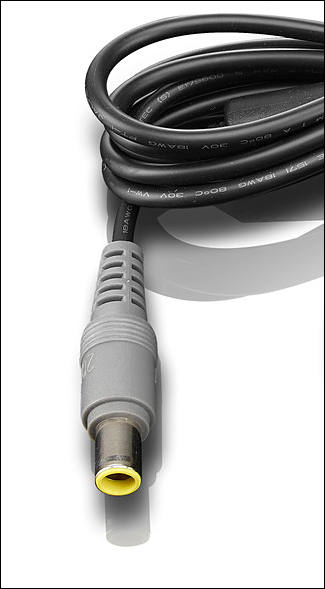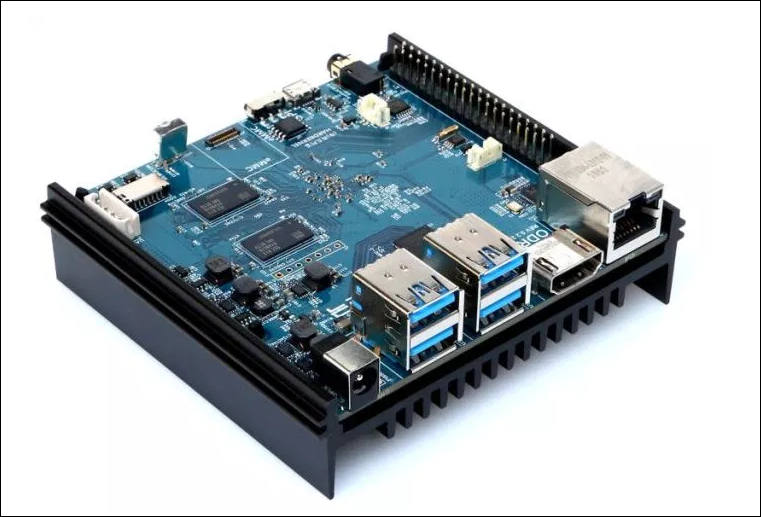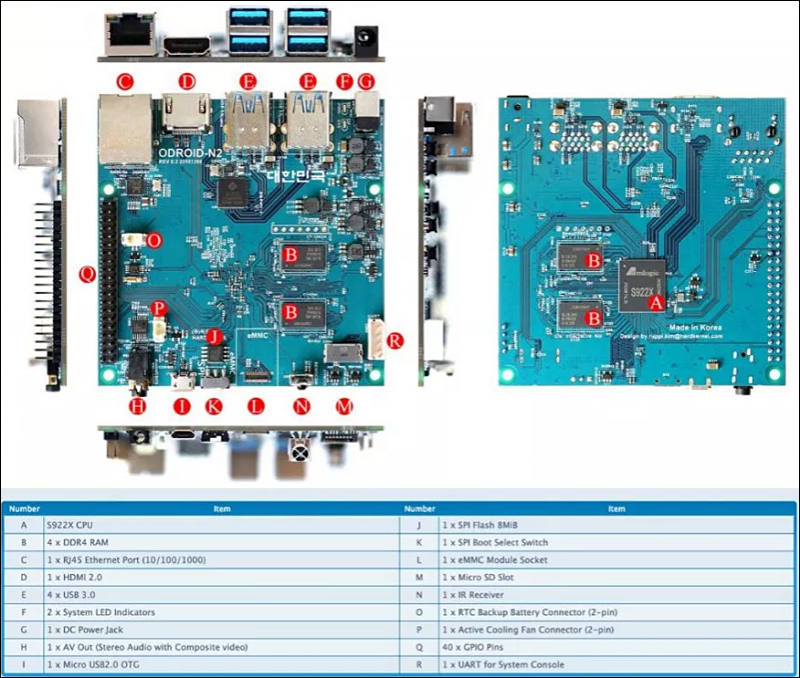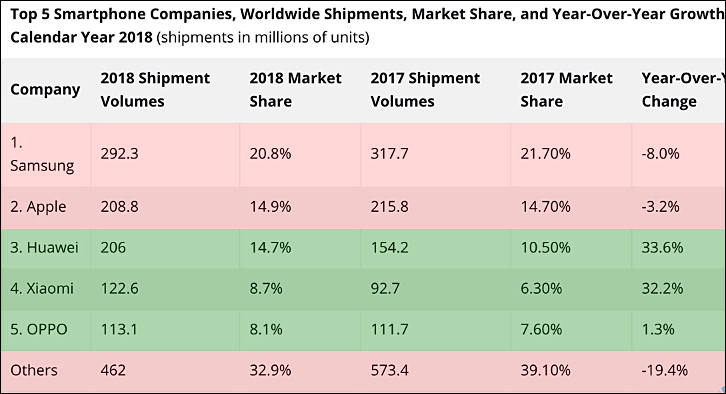
-

Instead of updating their outdated (latest model is actually very old 2016 one, just will small bad facelift) products, they are invested big money into boutique shops.
-
The microUSB connector was only originally designed to provide 1.8A, and even though that is an old standard and you can find chargers that perform just fine at more than that, so many people try to reuse old phone 1A chargers or buy cheap adaptors online to power their Raspberry Pis. The Pi is a computer, it requires a good quality, stable power supply that provides a stable 5V at the input and is capable of providing 2.5A. Not only the transformer needs to be decent, but also the connection needs to be good (or there will be a voltage drop) but more importantly, the cable needs to be good, or there will be a big drop along it. Bad cables are even more typical to find than unstable voltage supplies, so please, use a good cable, maybe a 20AWG or similar, or just get the official power supply. The take away is that not any USB charger is going to work properly, even if it is 2.5A 5V.
Add this to was we saw in the last section and we can begin to see the big picture. Most users are running their devices undervolted, and the GPU is hiding this from them, so they are actually running underclocked at 600MHz, almost as bad as the original ARMv6 pi.
https://ownyourbits.com/2019/02/02/whats-wrong-with-the-raspberry-pi/
-
Unfortunately I saw whole apartments destroyed by bad micro usb. Connector shorted out, charger overheated as result and after 2-3 hours fire started.
Also suggest to visit any high volume notebook and smartphones repair service and ask few questions about connectors, common issues and how easy it is to repair or replace. Reason why all of the sudden many companies went for USB-C is exactly feedback telling them that such device lives much less and repairs bring much more money (connector repairs are almost always excluded from warranty).
Around 50% of smartphone devices using USB-C never use more than 5W (as they use cheap chargers and cheap horrible wires). Next 30% are using up to 10W. And only remaining use from 15 to 30W (3A or 12V variants) with various quick charge methods.
Latest Pi model uses 6W, so it is not issue of power, it is issue of reliability.
Finding good safe power supply with USB-C while seems simple is really hard, it is area of extreme competition and huge number of fake remarked products.
-
Let me know when you're ready to come back to the real world where lots of devices are currently using USB-C to deliver far more power than is needed by this small SBC and are not bursting into flame. :)
-
Again, USB connectors are WRONG way to power such devices. It can look like simple and easy way for beginner, but I am not sure it must be done even for them as target audience. As such connectors, including USB-C, are prone to failure, heating, becoming real fire hazards.
For smartphones and notes most safe way is to use MagSafe type connectors. And Apple knows this perfectly, my sources told that they replaced it by USB-C type connectors as number of catastrophic drops increases a lot - hence more service income and new sales.
Btw, it is lot of magnet type USB cables, including ones for only power, but most of them are 1A.
As for barrel connectors:

It is best of them all - developed by real engineers and user interface designers. Easy to plug, easy to pull out, usage of large soft resin inside female part.

 sa7027.jpg325 x 589 - 23K
sa7027.jpg325 x 589 - 23K -
@Vitaliy_Kiselev One of the reasons that the Pi is popular is that it can be powered off of USB Micro-B. Since this board costs about 2-3x the price of the latest Raspberry Pi, it seems like there should be enough budget to bulid a good USB connector.
And while you may think it's easy to figure out the right type of barrel connector at the right voltage to replace the one that board needs, lots of others will find it opaque - vs a USB connector, which whether it needs extra leads or not, is still generally a whole lot easier to find.
-
Round plug type power connectors are more common outside smartphone industry. They are much better for the task. Such plug price for company making wires and small PSU is around 10x cheaper compared to good USB-C connector.
It is extremely easy to replace power supply, as it is common voltage and usually all of them use 1-2 common sizes of plugs.
And no, USB-C can carry only 2.5-3A at 5V as normal, most Chinese wires you can find at airports are best kept at 1A and below as they use extra thin alu wires (cheap USB-C Chinese cables are much worse than older Micro USB cheap ones).
Cables that can carry more power require special chip to enable such mode and separate extra wires (90% of cables lack this).
-
@Vitaliy_Kisilev Because USB-C is super common, can carry enough power, and it's much easier to replace the cable or power brick when broken. Also, when traveling internationally, it's easy to buy a USB wall plug which is nice and small vs having to carry a series of large plug adapters.
-
What is the advantage of using USB-C for power?
Thing is very fragile, does not allow cable to turn and very hard to impossible to repair only with soldering iron.
-
Looks like price is expected to be from $63-79. Not bad!
It's unfortunate that they didn't go USB-C for power, though. Maybe in the next iteration...
-
ODROID N2


ODROID-N2 measures about 3.5″ x 3.5″ x 0.7″ and is powered by an Amlogic S922x processor. That’s a hexa-core chip with four 1.8 GHz ARM Cortex-A73 CPU cores and two 1.9 GHz ARM Cortex-A53 cores and Mali-G53 graphics.
It supports DDR4 RAM that runs at 1320 MHz and has a microSD card slot for storage as well as support for an optional eMMC module. 8GB, 16GB, 32GB, 64GB, and 128GB modules are available.
Ports include Gigabit Ethernet, HDMI 2.1, composite video, 3.5mm audio, and four USB 3.0 host ports, plus a micro USB 2.0 OTG port. There’s also a 40-pin expansion header.
Android 9 Pie and Ubuntu 18.04 LTS software images will be available.

 sa7007.jpg761 x 517 - 57K
sa7007.jpg761 x 517 - 57K
 sa7008.jpg800 x 678 - 111K
sa7008.jpg800 x 678 - 111K -
@Energy80s Sure, the Firestick (or the Roku stick) are also potential options, but both have an awkward smartphone interface or require using a secondary remote control. Chromecast has a pretty smooth interface on a phone - and it's smaller than either of the other options.
-
Also I've never figured out what these bloody Alexa devices can offer me
You are old school. This things are spreading in US and EU like firestorm.
Idea is same - simplify interface to the level of Neanderthals. It is none of your business how things work, all you need is ask and listen to absolute truth presented by device.
Talk to young modern school and university guys - desktops are too complex for them. Even in smartphones they tend to use only few top popular apps and some games.
-
@eatstoomuchjam but you need another device to make the thing work in the first place. Much better to use a Firestick. Also I've never figured out what these bloody Alexa devices can offer me - despite being given one as a birthday present. Other than asking it the weather or to play U105, I can't think of anything else I need it for. Therefore it hasn't been plugged in since 2 days after I got it! Technology isn't always wonderful.
-
but being able to do it with a board costing next to nothing (and that was given away free on the cover of a magazine) was the real challenge.
I strongly suggest to account time average person need to do something working.
And with any really useful internet radio my proposal is much CHEAPER compared to Pi board project.
-
Uh, that's not what a Chromecast is at all.
It's a device that you control wirelessly that knows how to talk to IP streaming services. The playback is done by Chromecast, not by your device.
-
Didn't realise that I would spark such a discussion, but yes, I was using the Pi Zero as a streaming server rather than a receiver. It was really just to prove how versatile these little boards are. The music wasn't being mixed on the Pi as such, it was just playing out pre-mixed audio, but that it still had to play the audio files, encode them to MP3 on the fly, and serve them out with Icecast to the public internet. Yes of course you can use a mini PC to do the same (and indeed have full mixing and audio processing running as well) as I also do that with a little Sumvision Intel Atom device that cost about £100 a few years ago, but being able to do it with a board costing next to nothing (and that was given away free on the cover of a magazine) was the real challenge.
Incidently, I've never seen the point of a Chromecast as all it appears to be is a wireless HDMI lead. Far handier and cheaper just to use an actual HDMI cable!
-
I brought up the Chromecast. I use them often when traveling and haven't found them to be even remotely flaky. Also, I gave my older Chromecast to a friend. It took about 5 minutes to reconfigure it for her wifi network and 3 minutes to show her how to use the cast icon in the Netflix app on her phone. After that, she was able to use the Chromecast without any difficulties. Are you suggesting that a Pi-based streamer is similarly easy?
Of course, I also wouldn't brag that a SBC supports "gigabit" ethernet and then talk about how its gigabit ethernet is capable of throughput of 61 megabits per second (and yes, I know that the "gigabit" ethernet on the Pi is able to handle closer to 400 megabits/second). If you're trying to stream data from (or to) a USB-attached drive on the Pi, you will instantly have contention since it and the ethernet are hooked up to the same USB 2 bus.
The Raspberry Pi is a mediocre SBC with a fantastic community supporting it. It's not a solution for everything. If the Pi foundation doesn't innovate and produce a better model at some point, a number of community members will move to a different SBC which is more capable.
-
So, we finally have extreme fan here :-)
Do not try again to continue with your style of personal attacks instead of knowledge of the subject.
Your comments about the Pi sound like you’ve never even used one before. The “slow” Ethernet? It’s Gigabit, and a damn sight faster than the Pi’s onboard WiFi, which tops out at Wireless-N. On my 802.11AC network, Fast.com downloads at 14Mbps on Wifi, 61Mbps on Ethernet. But you’d know that if you’d actually tried this yourself.
Unfortunately for you I used it. If instead of typing lot of fan based things you looked above you could see on the chart (that you so hate) issue with Ethernet speed.
The fruit-named clones like OrangePi and MangoPi and KumquatPi aren’t even a statistical blip on the level of those cheap Chinese Android phones du jour you keep claiming are going to kill the iPhone. I’m sure I can speak for the Raspberry Pi folks when I say they welcome competition, but a breadboarded proto is not the same as an installed user base of tens of millions worldwide. Lets start from " Chinese Android phones du jour you keep claiming are going to kill the iPhone". Talking bullshit is nice, of course, but somehow my words are reflecting reality around you.

The fruit-named clones like OrangePi and MangoPi and KumquatPi aren’t even a statistical blip
I hope it is not so, but they clearly lack such avid fans.
When a single school much less a thousand start teaching middle schoolers how to code with OrangePi, let me know.
I saw few who use such in additional education :-)
So let's go into Raspberry Pi history and popularity
RP Founder: Raspberry Pi was originally designed to solve a very simple problem: a lack of computer science students. Upton told us that Cambridge went from receiving 600 to 250 applications a year for its comp-sci program. The stuff we were designing ... were all scaled around the idea that if you could get 1,000 units built and into the hands of the right 1,000 kids to solve this problem.
So, it was not like Chinese boards, guy had clear order from education business and huge media support also by them. Of course, it all coincided with big request for such things.
Upton explained that he grew up learning about computers in the 1980s and thought that the Pi should be like the hobbyist computers children programmed on during that decade. However, he wants to make sure that Raspberry Pi brings in a more diverse set of kids.
In other words some people wanted to see back non GUI computers, cheap with simple low level access and build in development environment. RP delivered on some of this points and badly failed on another. Most computers of the era had been neat consumer devices, yet with focus on BASIC, sometimes ASM and simple games.
But the biggest tell that you don’t really understand what you’re talking about is when you try to come up with better options for roles the Pi is actually used for, not your straw man concept of “it must suck because it isn’t as fast as a Windows PC”.
In turns out I understand very good.
Google Chromecast Audio? Have you ever actually tried living with Chromecast? I found Chromecast to be flaky and unreliable as an audio streamer vs. a Pi, a DAC, and about 10 mins of installing Rasbian and Shairport-Sync. Unlike Chromecast my AirPlay receivers never drop connections, never need rebooting, and seamlessly integrate with Plex, iOS and MacOS. You can even stream from Windows if you know what you’re doing. I would have loved for Chromecast to beat the Pi/DAC/Shairport combo, as it was a few dollars cheaper. But it was clearly the buggier, kludgier way to go. Also, it’s a moot point because Google killed it. And unlike Chromecast, I can always repurpose a Pi to do anything else I want down the road. I just took one of my AirPlay Pi’s and turned it into a Pi-hole ad-blocker. Took me 20 mins and cost me zero.
It is called inventing imaginary opponent and beat him up, as I never proposed Chromecast and it is present in one other post here only.
And the guy who posted about using the Zero, the cheapest, most underpowered Pi as an internet radio station? You came up with an AliExpress DIY board as a better option but he’s not using his Pi as a receiver, he’s using it to host and broadcast the actual internet radio station itself. Does your AliExpress do that? I don’t mean “can” it do that — do you know of anyone, anywhere, who ever used that board to host a radio station? Beyond that, your board costs $14. His Pi Zero is $10. $5 if you know where to shop. So again, your theoretical better option is better why exactly?
It is my bad here :-) Yet around 99% of people look for internet station receiver. Pi Zero is not alternative for ready to run board I referenced.
As for radio station and PI, any station with lot of content still requires HDD storage and it instantly makes Pi really unhandy solution. For $60-70 you can get perfect ready to run Mini PC with HDD bay, that you can turn into radio station in few minutes and with software that is light years ahead of his stuff.
My post was not about how Rasperri Pi is bad or unsuitable, it was more about how fans and community tend to start proposing how it is solution to all problems and it is just not best solution for most of them.

 sa6948.jpg726 x 394 - 46K
sa6948.jpg726 x 394 - 46K -
You need to turn off TV or multiple manufacturers sponsored websites (around 95% of them) to start realizing how wrong you are.
-
@eatstoomuchjam As far as I know, just the audio-only Chromecast Audio model has been discontinued: https://9to5google.com/2019/01/11/google-discontinued-chromecast-audio/
The video versions of the Chromecast including the 3rd generation (HD) Chromecast (which was just introduced in October 2018) and the 4K-capable Chromecast Ultra are still available.
-
I would also add the extreme pessimistic view towards everything
-
[Personal attack removed by PV]
Your comments about the Pi sound like you’ve never even used one before. The “slow” Ethernet? It’s Gigabit, and a damn sight faster than the Pi’s onboard WiFi, which tops out at Wireless-N. On my 802.11AC network, Fast.com downloads at 14Mbps on Wifi, 61Mbps on Ethernet. But you’d know that if you’d actually tried this yourself.
And yes, there are certainly other SOCs which beat the Pi in this performance metric or that. Do they have the vast worldwide user base of the Pi? The fruit-named clones like OrangePi and MangoPi and KumquatPi aren’t even a statistical blip on the level of those cheap Chinese Android phones du jour you keep claiming are going to kill the iPhone. I’m sure I can speak for the Raspberry Pi folks when I say they welcome competition, but a breadboarded proto is not the same as an installed user base of tens of millions worldwide. When a single school much less a thousand start teaching middle schoolers how to code with OrangePi, let me know.
But the biggest tell that you don’t really understand what you’re talking about is when you try to come up with better options for roles the Pi is actually used for, not your straw man concept of “it must suck because it isn’t as fast as a Windows PC”. Google Chromecast Audio? Have you ever actually tried living with Chromecast? I found Chromecast to be flaky and unreliable as an audio streamer vs. a Pi, a DAC, and about 10 mins of installing Rasbian and Shairport-Sync. Unlike Chromecast my AirPlay receivers never drop connections, never need rebooting, and seamlessly integrate with Plex, iOS and MacOS. You can even stream from Windows if you know what you’re doing. I would have loved for Chromecast to beat the Pi/DAC/Shairport combo, as it was a few dollars cheaper. But it was clearly the buggier, kludgier way to go. Also, it’s a moot point because Google killed it. And unlike Chromecast, I can always repurpose a Pi to do anything else I want down the road. I just took one of my AirPlay Pi’s and turned it into a Pi-hole ad-blocker. Took me 20 mins and cost me zero.
And the guy who posted about using the Zero, the cheapest, most underpowered Pi as an internet radio station? You came up with an AliExpress DIY board as a better option but he’s not using his Pi as a receiver, he’s using it to host and broadcast the actual internet radio station itself. Does your AliExpress do that? I don’t mean “can” it do that — do you know of anyone, anywhere, who ever used that board to host a radio station? Beyond that, your board costs $14. His Pi Zero is $10. $5 if you know where to shop. So again, your theoretical better option is better why exactly?
[Personal attack removed]
Iif you talk [.......] about something as widely popular and nearly uncriticizable as the Pi (I mean, FFS the most expensive version is $25, it runs desktop Linux, it consumes less power than a sleeping PC, it’s silent, and every day a thriving user community comes up with 100 more interesting things it can do), you’re just giving people less reason to take you and your personal views seriously.
-
That's a bummer if Chromecasts are going out of the market, but I suppose that with FireTV/Roku streamers being available at a similar price and with a lot of modern AV receivers including Aircast/Chromecast support out-of-the-box, sales are probably low.
For a travel streamer, though, it's pretty hard to beat the Chromecast.
-
Chromecasts are really cheap and work awfully well.
I think they are going out of market. If remember properly.
decent strategy to tide them over while they re-engineer for a new SoC.
I am not so sure, as it seems like they want to choose only between Broadcom and Qualcomm products.
I heard multiple times that they do not want to use Chinese best media/TV chips. -
Raspberry pis are useful for some things, but virtual machines are so much more useful for others. For instance, a raspberry pi runs serial port-ethernet redirection software connected to my 3d printer. I have a virtual machine running the vendor's Windows-based 3d printing software on one of my servers which is up 24/7. When I want to do a long print, I no longer need to leave my desktop running or walk into another room to check progress.
As for general purpose computing or setting up a media streamer, though, there are obviously lots of better options that exist. Chromecasts are really cheap and work awfully well. The pi can be an Airplay receiver? A Chromecast is a Google Cast receiver (works with more platforms than Airplay) and can also do multi-room audio sync if you have multiple. That's pretty cool.
Anyway, having a Raspberry Pi flagship store (in a big busy city) doesn't seem that crazy to me. I bet a lot of people shop there. It's probably a decent strategy to tide them over while they re-engineer for a new SoC.
Howdy, Stranger!
It looks like you're new here. If you want to get involved, click one of these buttons!
Categories
- Topics List23,991
- Blog5,725
- General and News1,354
- Hacks and Patches1,153
- ↳ Top Settings33
- ↳ Beginners256
- ↳ Archives402
- ↳ Hacks News and Development56
- Cameras2,367
- ↳ Panasonic995
- ↳ Canon118
- ↳ Sony156
- ↳ Nikon96
- ↳ Pentax and Samsung70
- ↳ Olympus and Fujifilm101
- ↳ Compacts and Camcorders300
- ↳ Smartphones for video97
- ↳ Pro Video Cameras191
- ↳ BlackMagic and other raw cameras116
- Skill1,960
- ↳ Business and distribution66
- ↳ Preparation, scripts and legal38
- ↳ Art149
- ↳ Import, Convert, Exporting291
- ↳ Editors191
- ↳ Effects and stunts115
- ↳ Color grading197
- ↳ Sound and Music280
- ↳ Lighting96
- ↳ Software and storage tips266
- Gear5,420
- ↳ Filters, Adapters, Matte boxes344
- ↳ Lenses1,582
- ↳ Follow focus and gears93
- ↳ Sound499
- ↳ Lighting gear314
- ↳ Camera movement230
- ↳ Gimbals and copters302
- ↳ Rigs and related stuff273
- ↳ Power solutions83
- ↳ Monitors and viewfinders340
- ↳ Tripods and fluid heads139
- ↳ Storage286
- ↳ Computers and studio gear560
- ↳ VR and 3D248
- Showcase1,859
- Marketplace2,834
- Offtopic1,319





